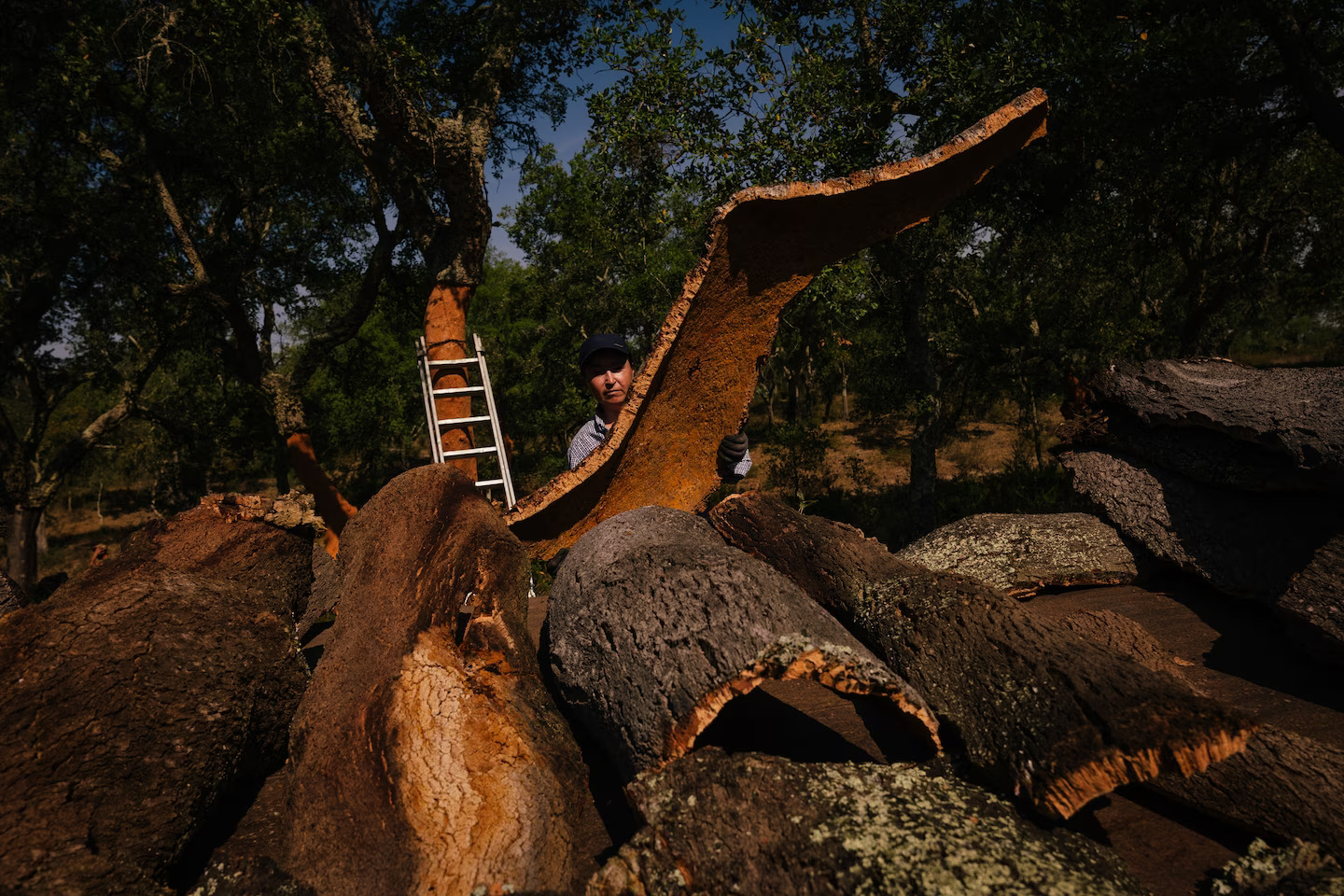WASHINGTON POST (3/2/2024)
The rhythmic noise of axes whacking trees echoes in the depths of the cork oak forest.
But in Coruche, a rural area south of the Tagus River known as Portugal’s “cork capital,” the bang of trees falling to the ground doesn’t follow the sound of the ax strokes. Instead, experienced workers carefully peel away the bark from the tree trunks.
This annual rite of extracting cork in the summer months has been around for thousands of years in the western Mediterranean. Egyptians, Persians, Greeks and Romans used the material to make fishing gear and sandals and to seal jugs, jars and barrels. As glass bottles gained popularity in the 18th century, cork became the preferred sealant because it is durable, waterproof, light and pliable.
Now cork is experiencing a revival as more industries look for sustainable alternatives to plastic and other materials derived from fossil fuels. The bark is now used for flooring and furniture, to make shoes and clothes, and as insulation in homes and electric cars. Portugal’s exports reached an all-time high of 670 million euros ($728 million) in the first half of 2023.
But cork is more than a trendy green material. In addition to creating jobs, the forests where it grows provide food and shelter for animals, all while sequestering carbon dioxide. And unlike most trees grown commercially, cork oaks are never cut down, meaning their carbon storage capacity continues through the 200 years or more they live (…)
Read more: https://www.washingtonpost.com/climate-solutions/2024/02/03/cork-sustainable-material/
Photos by José Sarmento Matos
